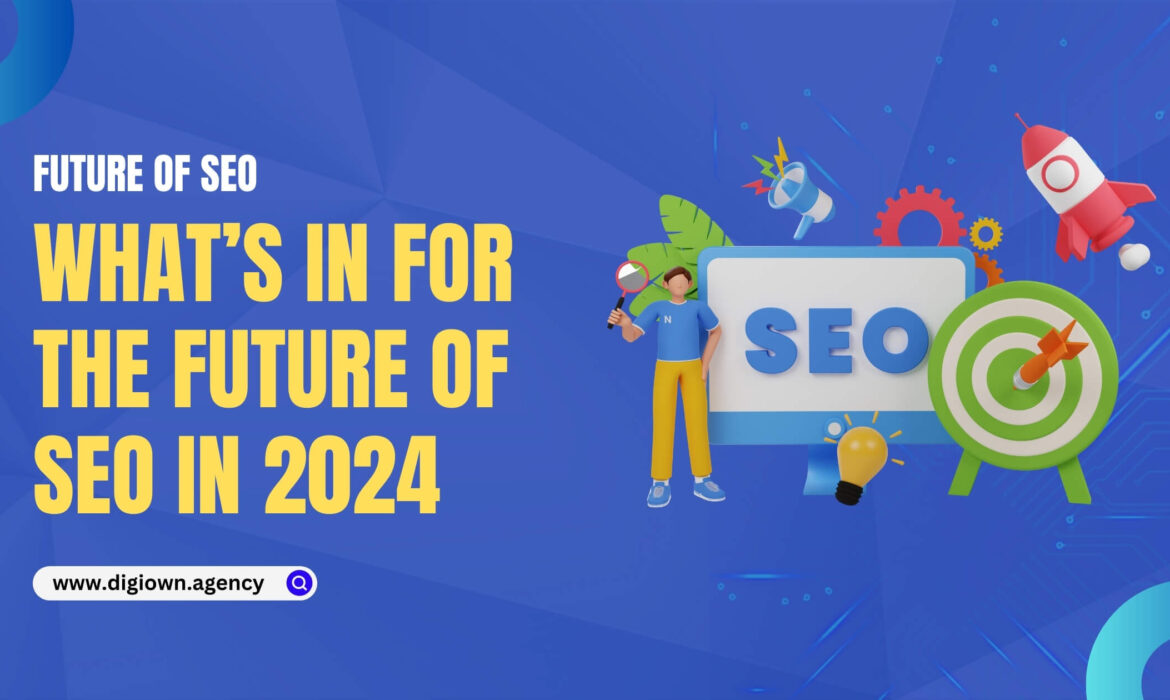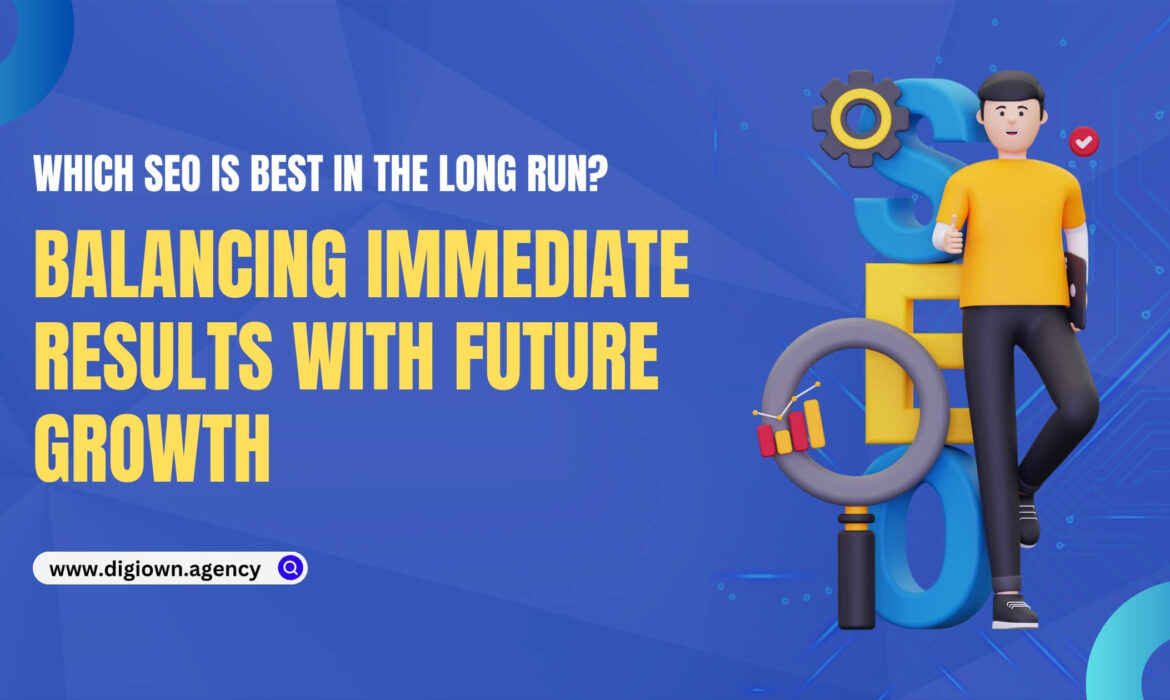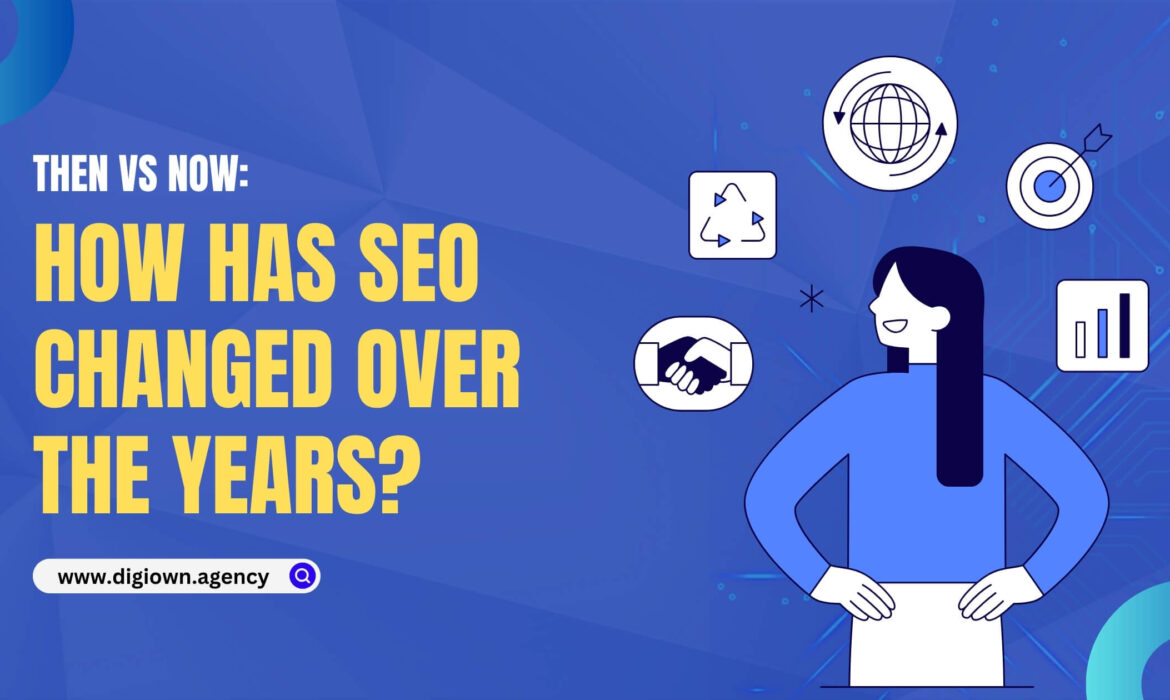What’s In For The Future Of SEO In 2024
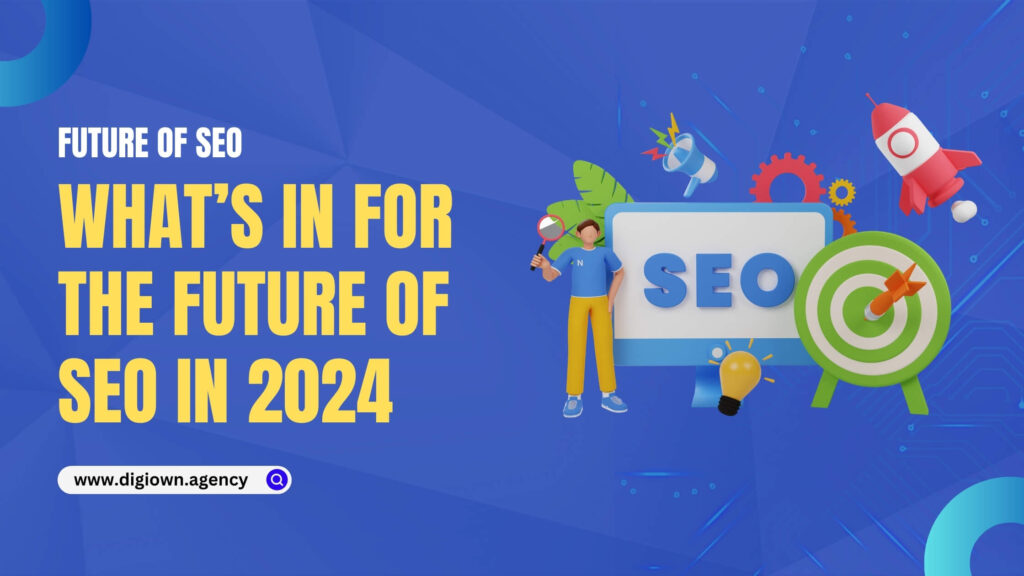
In 2024, SEO continues to be a critical component of digital marketing strategies, adapting to technological advancements and changing user behaviors. Understanding the future trends of SEO is essential for staying competitive in the online landscape.
First-Party Data Hub from SEO Traffic
First-party data has become invaluable as privacy concerns and regulations increase. Collecting data directly from users through SEO efforts helps build a robust data hub, enhancing personalization and targeting. This data can be leveraged to create more precise marketing campaigns and improve user experience.
Page Speed Optimization
Page speed remains a vital factor for both user experience and search engine rankings. With Google’s Core Web Vitals emphasizing performance metrics, optimizing page load times is crucial. Utilizing tools like Google PageSpeed Insights and implementing techniques such as image compression, browser caching, and minimizing JavaScript can significantly boost page speed.
Content Refresh Strategy
Regularly updating content ensures it remains relevant and valuable. Conducting content audits to identify outdated information and implementing a refresh strategy can enhance SEO performance. This includes updating statistics, improving readability, and adding new insights to existing articles.
User Search Intent
Understanding user search intent is fundamental to effective SEO. By analyzing search queries and user behavior, content can be tailored to meet the specific needs and questions of the audience. This approach increases the likelihood of higher rankings and better user engagement.
Creating Dynamic and Evergreen Content
Dynamic content that evolves with trends and evergreen content that remains relevant over time are both essential. Dynamic content keeps users engaged with current topics, while evergreen content continues to attract traffic long after publication. Balancing both types ensures sustained SEO success.
Mobile-Friendly Website
With the majority of searches now conducted on mobile devices, a mobile-friendly website is imperative. Google’s mobile-first indexing prioritizes sites that are optimized for mobile viewing. Ensuring responsive design, fast mobile load times, and intuitive navigation enhances mobile user experience and SEO rankings.
Semantic Search Optimization
Semantic search focuses on understanding the context and meaning behind search queries. Optimizing for semantic search involves using structured data, natural language processing, and contextually relevant keywords. This helps search engines better understand and rank content accurately.
Google Discover Optimization
Google Discover offers personalized content recommendations to users. To optimize for Google Discover, create high-quality, engaging content that aligns with user interests and follows best practices for SEO. Visual content, timely updates, and compelling headlines can increase visibility in Discover feeds.
Enhanced User Experience
A positive user experience (UX) is crucial for retaining visitors and improving SEO. Factors such as intuitive navigation, fast load times, mobile responsiveness, and accessible design contribute to a better UX. Focusing on these aspects not only enhances user satisfaction but also boosts search engine rankings.
AI and Machine Learning in SEO
AI and machine learning are transforming SEO by enabling more sophisticated search algorithms and analysis. Tools leveraging AI can provide insights into user behavior, automate content creation, and enhance keyword research. Staying updated with AI advancements helps in optimizing SEO strategies effectively.
Voice Search Optimization
With the rise of voice-activated devices, optimizing for voice search is becoming increasingly important. Voice search queries tend to be longer and conversational. Focusing on natural language keywords, featured snippets, and local SEO can improve visibility in voice search results.
E-A-T (Expertise, Authoritativeness, Trustworthiness)
Google emphasizes the importance of E-A-T in content evaluation. Establishing expertise, authoritativeness, and trustworthiness involves creating high-quality, well-researched content, building backlinks from reputable sources, and ensuring transparency. This enhances credibility and improves search rankings.
Video SEO
Video content is gaining prominence in search results. Optimizing video content involves using descriptive titles, relevant tags, and transcripts. Hosting videos on platforms like YouTube and embedding them in relevant blog posts can drive traffic and improve SEO performance.
Core Web Vitals
Core Web Vitals are critical metrics that affect search rankings. These include Largest Contentful Paint (LCP), First Input Delay (FID), and Cumulative Layout Shift (CLS). Improving these metrics involves optimizing server response times, implementing efficient coding practices, and ensuring visual stability.
Conclusions
The future of SEO in 2024 is shaped by advancements in technology and shifts in user behavior. Staying ahead requires continuous adaptation to new trends and best practices. By focusing on the outlined strategies, businesses can ensure their SEO efforts remain effective and drive sustained success.
Debunking the Myth: Is SEO Really a Waste of Money?
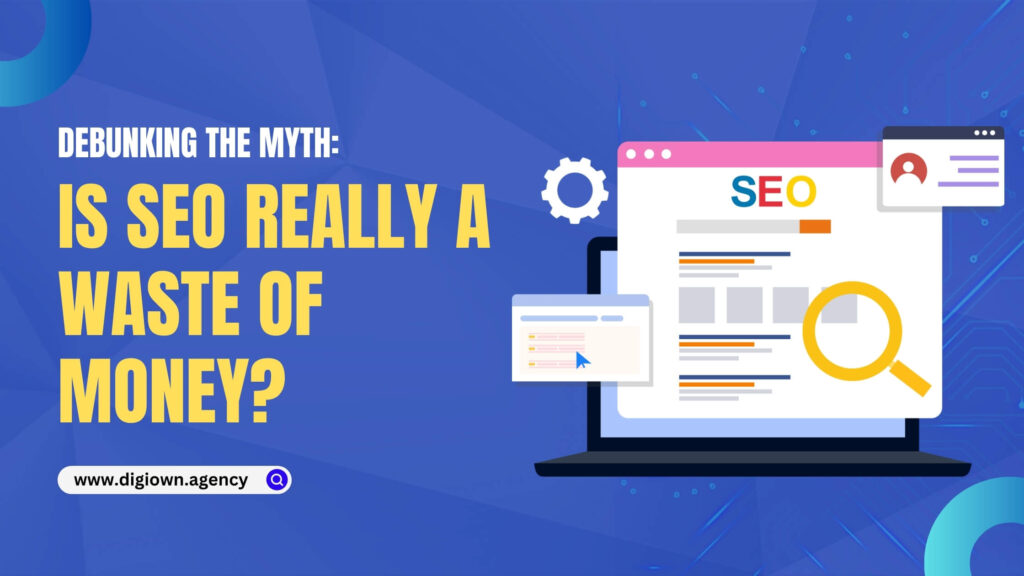
Is SEO a waste of money? This question pops up frequently in business discussions, particularly among those who have yet to experience the transformative power of search engine optimization. SEO, or Search Engine Optimization, has been a staple in digital marketing for years, yet its value is often misunderstood. According to a survey by BrightEdge, organic search drives 53.3% of all website traffic, making SEO a critical component of any digital strategy. In this article, we’ll debunk the myth that SEO is a waste of money by diving deep into its mechanics, addressing common misconceptions, showcasing success stories, and providing insights on ensuring SEO success.
Understanding SEO
What is SEO?
SEO, or Search Engine Optimization, is the practice of optimizing a website to improve its visibility on search engines like Google. The main components of SEO include:
- On-page SEO: This involves optimizing individual web pages to rank higher and earn more relevant traffic. Key elements include content quality, keyword usage, and meta tags.
- Off-page SEO: This focuses on building a website’s reputation through backlinks from other credible sites.
- Technical SEO: This ensures that a website meets the technical requirements of search engines, such as site speed, mobile-friendliness, and secure connections (HTTPS).
How SEO Works
Search engines use complex algorithms to rank websites based on relevance and quality. These algorithms consider hundreds of factors, but some of the most important include:
- Keywords: Terms that users enter into search engines. Properly optimizing for relevant keywords is crucial.
- Content: High-quality, informative, and engaging content is essential for attracting and retaining visitors.
- Backlinks: Links from other websites serve as endorsements for your content’s quality.
- User Experience: Elements like site speed, mobile-friendliness, and secure browsing contribute significantly to rankings.
Common Misconceptions About SEO
Immediate Results Fallacy
One of the biggest misconceptions about SEO is the expectation of immediate results. Unlike paid advertising, SEO is a long-term strategy. It can take several months to see significant improvements in rankings and traffic. A study by Ahrefs found that only 5.7% of newly published pages will get to Google’s Top 10 within a year.
SEO is a One-Time Task
SEO is not a one-and-done task. Search algorithms constantly evolve, and so should your SEO strategies. Regular updates to content, ongoing link-building efforts, and continuous technical audits are necessary to maintain and improve rankings.
SEO Guarantees Top Ranking
No one can guarantee a #1 spot on Google. Search rankings are determined by many factors, including competition and changes in algorithms. Promises of guaranteed top rankings are often unrealistic and a red flag when choosing an SEO provider.
The Value of SEO
Long-Term Benefits
SEO offers sustainable traffic growth. Once your site ranks well, it can maintain its position with less ongoing effort compared to paid advertising, which stops driving traffic once you stop paying. This can lead to a consistent stream of visitors and potential customers.
Cost-Effectiveness
SEO can be more cost-effective than other marketing strategies. While it requires an initial investment, the long-term benefits can significantly outweigh the costs. For example, a HubSpot report found that inbound marketing (which includes SEO) costs 61% less per lead than outbound marketing (e.g., paid ads).
Case Studies and Success Stories
Case Study 1: Small Business Success
Consider a small e-commerce store specializing in handmade crafts. Initially, the site had minimal traffic and few sales. After investing in SEO, focusing on keyword optimization and content creation, the store saw a 150% increase in organic traffic within six months. This translated to a 200% increase in sales, demonstrating the power of a well-executed SEO strategy.
Case Study 2: Major Brand Improvement
A major retailer revamped its SEO strategy by improving site speed, optimizing mobile experience, and enhancing content quality. Within a year, the retailer saw a 300% increase in organic traffic and a 250% increase in revenue from organic searches. This case highlights how even established brands can benefit immensely from investing in SEO.
Key Takeaways
These case studies illustrate that SEO, when done correctly, can yield significant returns, making it far from a waste of money.
When SEO Might Seem Like a Waste of Money
Poor Strategy and Execution
SEO can seem like a waste of money if not executed properly. Common mistakes include keyword stuffing, low-quality content, and neglecting technical SEO aspects. These errors can lead to poor rankings and wasted resources.
Unrealistic Expectations
Setting unrealistic expectations, such as expecting immediate results or guaranteed top rankings, can lead to disappointment. Understanding that SEO is a long-term investment is crucial for measuring its success.
Lack of Proper Measurement
Without proper tracking and analytics, it’s challenging to see the full impact of SEO efforts. Tools like Google Analytics and SEMrush can help monitor progress and adjust strategies accordingly.
Ensuring SEO Success
Choosing the Right SEO Partner
Selecting a reputable SEO agency or consultant is crucial. Look for providers with proven track records, transparent practices, and realistic promises. For instance, Digiown offers tailored SEO strategies that align with specific business goals and needs.
Developing a Solid SEO Strategy
A successful SEO strategy should include comprehensive keyword research, high-quality content creation, ongoing link-building efforts, and regular technical audits. For insights into comprehensive SEO approaches, you can refer to Digiown’s SEO Audit Services.
Continuous Monitoring and Adjustment
SEO is an ongoing process. Regularly monitor your site’s performance, keep up with algorithm updates, and adjust your strategy as needed to stay ahead of the competition. For businesses looking to maintain and improve their SEO efforts, exploring services like Digiown’s Page Speed Optimization can be beneficial.
Conclusion
SEO is far from a waste of money. It is a valuable investment that can drive sustainable traffic, increase brand visibility, and ultimately boost revenue. By understanding its mechanics, addressing common misconceptions, and implementing effective strategies, businesses can harness the power of SEO to achieve long-term success.
Additional Resources
Recommended Reading
- “The Art of SEO” by Eric Enge, Stephan Spencer, and Jessie Stricchiola
- “SEO 2024” by Adam Clarke
Tools and Software
SEO Communities and Forums
By investing wisely in SEO and staying informed about best practices and industry trends, businesses can ensure they are not wasting money but rather investing in a powerful tool for growth and success.
For more details on professional SEO services, you can visit the SEO Services page on the Digiown website.
Which SEO Is Best In the Long Run? Balancing Immediate Results with Future Growth
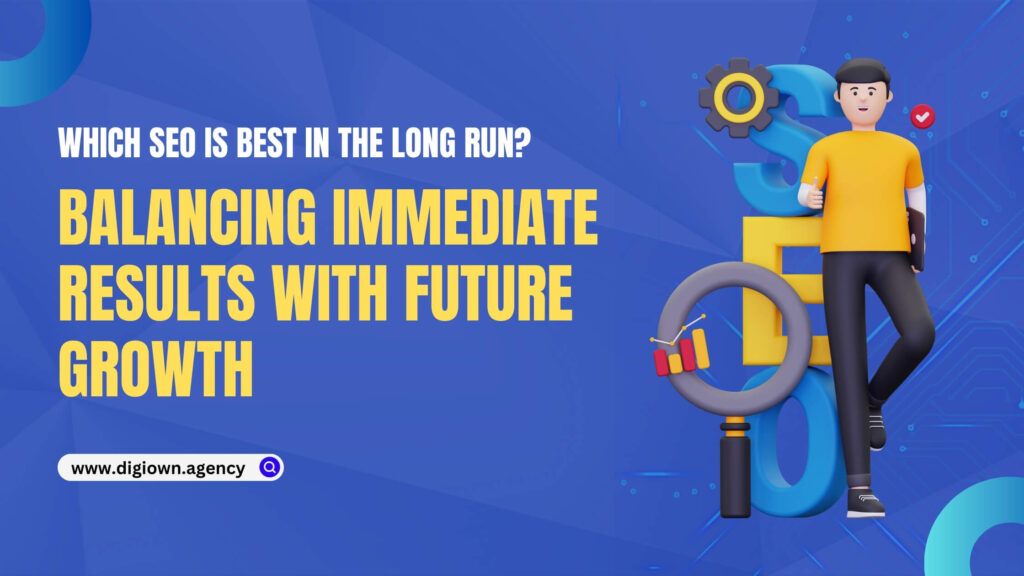
Imagine investing time, effort, and resources into building your online presence, only to watch it crumble because of poor SEO choices. It’s like constructing a magnificent castle on a shaky foundation. To ensure your digital kingdom stands the test of time, you need to choose the right SEO strategy. But with so many options—white hat, black hat, and grey hat—which one truly reigns supreme in the long run? This blog is your guide to understanding which SEO is best for long run success, helping you make informed decisions for enduring online success. Let’s dive into the intricacies of SEO to find the most sustainable path forward!
Understanding SEO and Its Importance
SEO, or Search Engine Optimization, is the practice of enhancing a website to increase its visibility in search engine results pages (SERPs). The primary goal is to attract more organic (non-paid) traffic to the site. This involves various strategies, including keyword research, content creation, and technical improvements.

Components of SEO for the Long Run
Here, we delve into the four primary components of SEO: On-Page SEO, Off-Page SEO, Technical SEO, and Local SEO, each playing a vital role in a comprehensive SEO strategy.
On-Page SEO
On-page SEO refers to the optimization techniques applied directly within the website to improve its search engine ranking and attract more relevant traffic. It focuses on both the content and HTML source code of pages that can be optimized.
Key Elements of On-Page SEO
- Keyword Research and Optimization
- Keyword Research: The foundation of any SEO strategy. Identify relevant keywords that potential customers use to find products or services.
- Keyword Placement: Strategically place primary and secondary keywords in titles, headers, meta descriptions, and throughout the content.
- High-Quality Content
- Content Creation: Produce engaging, informative, and valuable content that meets the needs of your audience.
- Content Format: Use a mix of text, images, videos, and infographics to enhance user engagement.
- Content Length: Long-form content often performs better in search rankings.
- Meta Tags Optimization
- Title Tags: Craft compelling and keyword-rich titles that accurately describe the page content.
- Meta Descriptions: Write concise and enticing meta descriptions to improve click-through rates.
- Header Tags (H1, H2, H3, etc.)
- Structure Content: Use header tags to organize content hierarchically, making it easier for search engines and users to understand.
- URL Structure
- Clean URLs: Create user-friendly and descriptive URLs, incorporating primary keywords where possible.
- Internal Linking
- Link to Relevant Content: Enhance user navigation and distribute page authority across your site by linking to related pages and articles.
- Image Optimization
- Alt Text: Use descriptive alt text for images to improve accessibility and help search engines understand the content.
- File Names and Sizes: Optimize image file names and sizes to enhance page load speed.
- Mobile-Friendliness
- Responsive Design: Ensure your website is accessible and fully functional on mobile devices.
- User Experience (UX)
- Navigation: Design intuitive and easy-to-use navigation menus.
- Engagement: Implement interactive elements like comment sections, social share buttons, and calls to action (CTAs).
Off-Page SEO
Off-page SEO involves activities conducted outside of the website to improve its authority and ranking. It primarily focuses on building backlinks from reputable sites and enhancing the site’s reputation.
Key Elements of Off-Page SEO
- Backlink Building
- Quality over Quantity: Focus on acquiring backlinks from authoritative and relevant websites.
- Guest Blogging: Write and publish articles on reputable sites to gain backlinks and drive traffic.
- Social Media Engagement
- Brand Presence: Use social media platforms to increase brand visibility and drive traffic to your site.
- Content Promotion: Share your content across social media channels to reach a broader audience and encourage shares.
- Influencer Outreach
- Collaboration: Partner with influencers in your industry to promote your content and gain valuable backlinks.
- Online Reviews and Reputation Management
- Encourage Reviews: Request satisfied customers to leave positive reviews on platforms like Google My Business, Yelp, and industry-specific review sites.
- Respond to Feedback: Actively manage and respond to customer reviews to maintain a positive online reputation.
- Forums and Community Participation
- Engage in Discussions: Participate in relevant forums and online communities like Reddit, Quora, and industry-specific boards to share expertise and build backlinks.
- Press Releases
- Newsworthy Content: Distribute press releases about significant company updates or milestones to gain media coverage and backlinks.
Technical SEO
Technical SEO involves optimizing the technical aspects of a website to improve its crawlability, indexability, and overall performance. It ensures that search engines can effectively access, crawl, and index the site.
Key Elements of Technical SEO
- Website Speed Optimization
- Minimize HTTP Requests: Reduce the number of requests made by the browser to load resources.
- Compress Files: Use Gzip compression for HTML, CSS, and JavaScript files.
- Optimize Images: Use appropriate image formats, compress images, and implement lazy loading.
- Mobile-Friendliness
- Responsive Design: Ensure the site’s design and layout adapt to different screen sizes.
- Mobile Usability: Optimize touch elements and ensure easy navigation on mobile devices.
- Crawlability and Indexability
- XML Sitemaps: Create and submit an XML sitemap to help search engines understand your site structure.
- Robots.txt File: Use the robots.txt file to guide search engines on which pages to crawl and index.
- Structured Data Markup
- Schema Markup: Implement schema markup to provide search engines with additional context about your content, enhancing rich snippets.
- Secure Sockets Layer (SSL)
- HTTPS: Ensure your website uses HTTPS to encrypt data and improve security.
- Canonical Tags
- Duplicate Content: Use canonical tags to indicate the preferred version of a webpage, avoiding duplicate content issues.
- 404 Error Handling
- Custom 404 Pages: Create user-friendly 404 error pages with navigation options to improve user experience.
- Website Architecture
- Hierarchical Structure: Organize content in a clear and logical structure to improve crawlability and user experience.
Local SEO
Local SEO focuses on optimizing a website to attract more business from relevant local searches. It is especially crucial for businesses with physical locations or those serving specific geographic areas.
Key Elements of Local SEO
- Google My Business (GMB)
- Complete Profile: Ensure your GMB profile is fully filled out with accurate business information.
- Regular Updates: Post updates, offers, and announcements to keep your profile active.
- Local Citations
- Consistency: Ensure your business name, address, and phone number (NAP) are consistent across all local directories and listings.
- Quality Directories: List your business on reputable local directories like Yelp, TripAdvisor, and industry-specific sites.
- Customer Reviews
- Encourage Reviews: Request satisfied customers to leave positive reviews on Google, Yelp, and other review platforms.
- Respond to Reviews: Actively engage with reviews to show customers you value their feedback.
- Local Keywords
- Geo-specific Keywords: Use keywords that include your city or region to optimize for local searches.
- Localized Content: Create content that is relevant to your local audience, including local news, events, and case studies.
- Local Backlinks
- Community Engagement: Partner with local businesses, organizations, and influencers to gain backlinks from local sites.
- Sponsorships and Events: Sponsor local events or participate in community activities to build local backlinks and brand presence.
- NAP Consistency
- Accurate Information: Ensure your business name, address, and phone number are consistent across all online platforms and listings.
- Mobile Optimization
- Local Searches: Optimize your site for mobile devices, as many local searches are conducted on smartphones.
- Local Content
- Community Focus: Develop content that addresses local interests and issues, helping to engage the local audience.

White Hat, Black Hat, and Grey Hat SEO
There are three main types of SEO strategies: White Hat SEO, Black Hat SEO, and Grey Hat SEO. Each type has its own set of practices, ethical implications, and risks. Understanding these categories is crucial for determining which SEO is best for long run and making informed decisions that align with business goals and search engine guidelines.
White Hat SEO
White Hat SEO refers to the use of optimization strategies, techniques, and tactics that focus on a human audience opposed to search engines and completely follow search engine rules and policies.
Key Practices of White Hat SEO
- Quality Content Creation
- Valuable Information: Producing high-quality, relevant, and informative content that provides value to users.
- Content Uniqueness: Ensuring that the content is original and not duplicated from other sources.
- Keyword Research and Optimization
- Relevant Keywords: Using keywords that accurately reflect the content and search intent of users.
- Natural Integration: Incorporating keywords naturally into the content without overstuffing.
- Link Building
- Organic Backlinks: Earning backlinks naturally from authoritative and relevant websites through high-quality content.
- Guest Posting: Writing articles for reputable blogs and websites to gain exposure and backlinks.
- On-Page Optimization
- Meta Tags: Crafting accurate and compelling meta titles and descriptions.
- Header Tags: Using header tags (H1, H2, H3) to structure content logically.
- User Experience (UX)
- Website Usability: Ensuring the website is easy to navigate, responsive, and accessible.
- Page Speed: Optimizing the website’s loading speed to enhance user satisfaction.
- Mobile Optimization
- Responsive Design: Ensuring the website works well on all devices, including mobile phones and tablets.
Benefits of White Hat SEO
- Sustainability: Adhering to search engine guidelines ensures long-term results without the risk of penalties.
- Trust and Credibility: Builds trust with users and search engines, enhancing the website’s reputation.
- User Satisfaction: Focuses on providing a positive experience for users, which can lead to higher engagement and conversions.
Black Hat SEO
Black Hat SEO involves practices that violate search engine guidelines and aim to manipulate search engine algorithms to achieve higher rankings. These techniques can offer short-term gains but come with significant risks.
Key Practices of Black Hat SEO
- Keyword Stuffing
- Overuse of Keywords: Excessively using keywords in content, meta tags, and alt text to manipulate rankings.
- Cloaking
- Hidden Content: Showing different content to search engines than what is visible to users.
- Link Schemes
- Buying Links: Purchasing backlinks to artificially inflate the website’s authority.
- Link Farms: Using networks of low-quality sites to generate a large number of backlinks.
- Duplicate Content
- Content Duplication: Copying content from other websites without permission to increase content volume.
- Hidden Text and Links
- Invisible Elements: Using white text on a white background or hiding links to manipulate rankings.
- Doorway Pages
- Manipulative Pages: Creating low-quality pages that are stuffed with keywords and designed to rank well but redirect users to different content.
Risks of Black Hat SEO
- Penalties: Search engines can penalize or even ban websites caught using black hat techniques, resulting in a significant drop in rankings or complete removal from search results.
- Reputation Damage: Engaging in deceptive practices can harm the website’s reputation and credibility with users.
- Short-term Gains: While black hat tactics might provide quick results, they are not sustainable and can lead to long-term losses.
Grey Hat SEO
Grey Hat SEO falls somewhere between white hat and black hat SEO. It involves practices that are not explicitly against search engine guidelines but are still questionable and carry some risk.
Key Practices of Grey Hat SEO
- Buying Expired Domains
- Link Equity: Purchasing expired domains with established link equity and redirecting them to your site.
- Link Exchange
- Reciprocal Linking: Exchanging links with other websites to increase backlinks.
- Content Spinning
- Article Rewriting: Using software to rewrite existing content to create “new” articles that are not duplicated but are of lower quality.
- Clickbait Titles
- Enticing Headlines: Using sensational or misleading headlines to attract clicks and increase engagement.
- Social Media Automation
- Automated Engagement: Using bots to increase followers, likes, and shares on social media platforms.
Pros and Cons of Grey Hat SEO
- Advantages: Can provide quicker results than white hat techniques without the immediate risks associated with black hat methods.
- Disadvantages: Still carries the risk of penalties if search engines update their algorithms to target these practices. Can also harm the website’s reputation if users perceive the tactics as manipulative.
So, the question is, What Type of Long Term SEO Strategy is Best?
You’ve probably already guessed it.
White hat SEO is the ultimate long-term strategy for businesses aiming for sustainable growth in website traffic and sales. While the process of ranking a site organically with white hat techniques requires patience and can sometimes be challenging, it offers a reliable path to success. The biggest advantage? You won’t face penalties from Google, the primary source of traffic for nearly every industry. By adhering to ethical SEO practices, you secure your site’s future and build a strong foundation for continued growth and stability in search engine rankings.
In conclusion, the search for which SEO is best for long run leads us to the undeniable conclusion that white hat SEO, with its emphasis on ethical practices and user-centered strategies, is the optimal choice for enduring online success.
How SEO Has Changed in Recent Years & What It Means for You
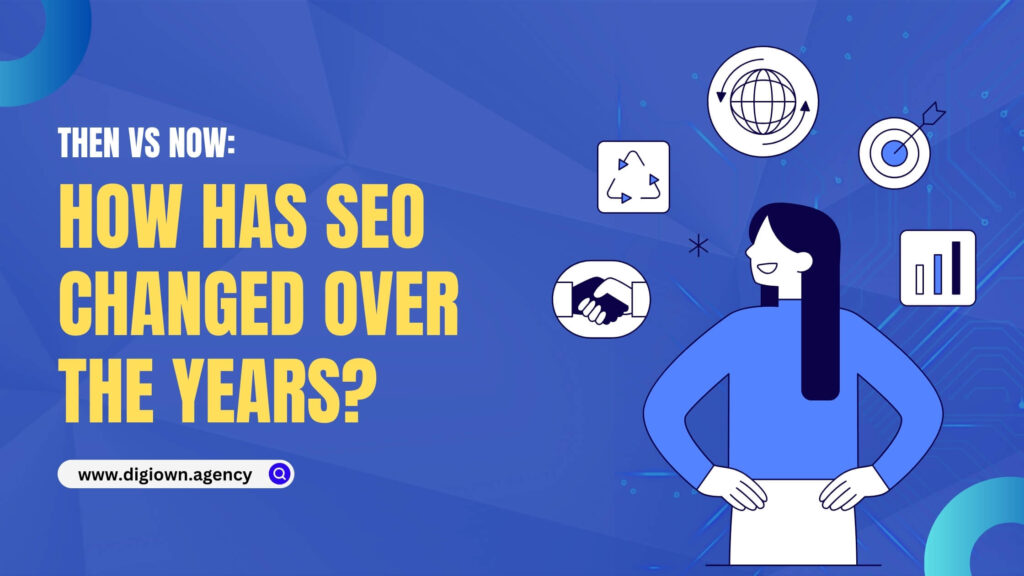
Introduction
Search Engine Optimization (SEO) has dramatically transformed over the last 15 years. As the backbone of digital marketing, understanding how has SEO changed in recent years is crucial for marketers, businesses, and content creators aiming to stay ahead in a dynamic digital landscape.
The Evolution of Search Engine Algorithms

Early 2000s SEO Practices
In the early days of SEO, tactics such as keyword stuffing and focusing on the sheer quantity of backlinks were prevalent. These strategies aimed to exploit search engine algorithms that were less sophisticated than today’s standards. Websites often focused on placing as many keywords as possible into their content without considering readability or user experience. Backlinks, regardless of their quality, were heavily pursued to boost search engine rankings.
Introduction of Google’s Game-Changing Algorithms
The landscape began to change with Google’s introduction of the Panda update in 2011 and the Penguin update in 2012. The Panda update targeted low-quality content, penalizing sites with thin content, duplicate content, and content farms. The Penguin update focused on link quality, penalizing sites using manipulative link practices such as link schemes and unnatural linking patterns. These updates marked a significant shift towards quality and relevance, emphasizing the importance of content and ethical link-building practices.
The Role of Artificial Intelligence in SEO
AI is revolutionizing SEO by enhancing how search engines understand and rank content. Google’s RankBrain, introduced in 2015, uses machine learning to interpret the context of user queries, improving the relevance of search results. AI technologies allow for more personalized search experiences, predicting what information users might find helpful based on previous behaviors. This personalization means that search results can vary for different users based on their search history, location, and preferences, making SEO strategies more complex and targeted.
The Rise of Mobile SEO

The Impact of Mobile-First Indexing
Google’s shift to mobile-first indexing in 2018 emphasized the importance of mobile-friendly websites. This change reflected the growing number of internet users accessing the web via mobile devices, making mobile optimization a critical SEO factor. Mobile-first indexing means that Google predominantly uses the mobile version of the content for indexing and ranking, highlighting the necessity of a seamless mobile user experience.
Optimization for Mobile Devices
Today, ensuring a site is responsive and mobile-friendly is not just a recommendation but a necessity. It affects not only user experience but also search ranking. Responsive design, fast loading times, and easy navigation on mobile devices are essential components of mobile optimization. Mobile usability, including touch-friendly navigation and readable text, has become a crucial element of SEO.
The Importance of User Experience (UX)
Page Speed
As part of enhancing user experience, the speed at which pages load has become a critical ranking factor. Slow-loading pages can lead to high bounce rates and lower rankings. Google’s PageSpeed Insights and Core Web Vitals metrics help webmasters identify and improve page speed issues, making it a key area of focus for SEO.
Mobile Usability
Alongside speed, mobile usability—ensuring content is readable and accessible on mobile devices—has become crucial. Factors such as touch-friendly buttons, easy navigation, and content that adjusts to different screen sizes are vital for providing a good user experience on mobile devices.
Safe Browsing and Security
Ensuring a website is secure and free from malicious software is now integral to SEO rankings, reflecting Google’s commitment to safe browsing. HTTPS has become a standard, and sites without it are flagged as “not secure,” which can deter users and impact rankings. Google’s Safe Browsing tool helps identify and mitigate security issues.
Content Quality Over Keywords
From Keyword Density to Search Intent
The focus has shifted from mere keyword density to understanding and matching search intent. High-quality content that satisfies user intent tends to rank higher than keyword-stuffed content. This shift means that content creators must understand the needs and questions of their audience and provide comprehensive, valuable content that addresses those needs.
Local SEO Becomes Crucial
The Rise of Local Search
Local SEO has become essential, especially for businesses serving specific geographical areas. Optimizing for local search involves specific strategies like managing local listings, optimizing Google My Business profiles, and using local keywords. Local SEO helps businesses appear in local search results and on Google Maps, making it easier for local customers to find them.
Voice Search Optimization
Preparing for the Voice-Activated Future
With the rise of voice-activated devices, optimizing for voice search requires understanding natural speech patterns and longer query phrases. Voice search queries tend to be more conversational and question-based, so optimizing content to answer these types of queries can help capture this growing segment of search traffic.
Visual Search and SEO
Integration of Image Recognition
Search engines now recognize images better, allowing them to play a significant role in SEO strategies, especially for e-commerce and visual content-heavy sites. Optimizing images with descriptive filenames, alt text, and structured data can enhance visibility in image search results.
The Integration of Social Media and SEO
Social Signals
While the direct SEO benefits of social media are debated, there’s no doubt that social media enhances content visibility and drives traffic, indirectly affecting SEO. Engaging with audiences on social media can increase brand awareness, drive website traffic, and generate backlinks, all of which can positively impact SEO.
The Importance of Link Building
Shift From Quantity to Quality
Today, the focus is on acquiring high-quality backlinks from reputable sites rather than the number of links, emphasizing the quality of connections over quantity. High-quality backlinks from authoritative sites signal to search engines that your content is trustworthy and valuable, improving your site’s rankings.
Predictions for the Future of SEO
Continual Adaptation to New Technologies
SEO is expected to keep evolving with technological advancements, particularly with the integration of AI and machine learning. Staying updated with these changes and adapting strategies accordingly will be crucial for maintaining and improving search rankings.
The Growing Importance of Ethics in SEO
As search engines become more sophisticated, the ethical implications of SEO practices, such as user privacy and data security, are coming to the forefront. Ethical SEO practices will become increasingly important as users and search engines demand transparency and integrity.
Conclusion
The last 15 years have seen profound changes in SEO, driven by advancements in technology and shifts in user behavior. Understanding how has SEO changed in recent years is crucial for anyone looking to leverage SEO effectively. Emphasizing quality content, user experience, and ethical practices will continue to be key to successful SEO strategies in the future.

